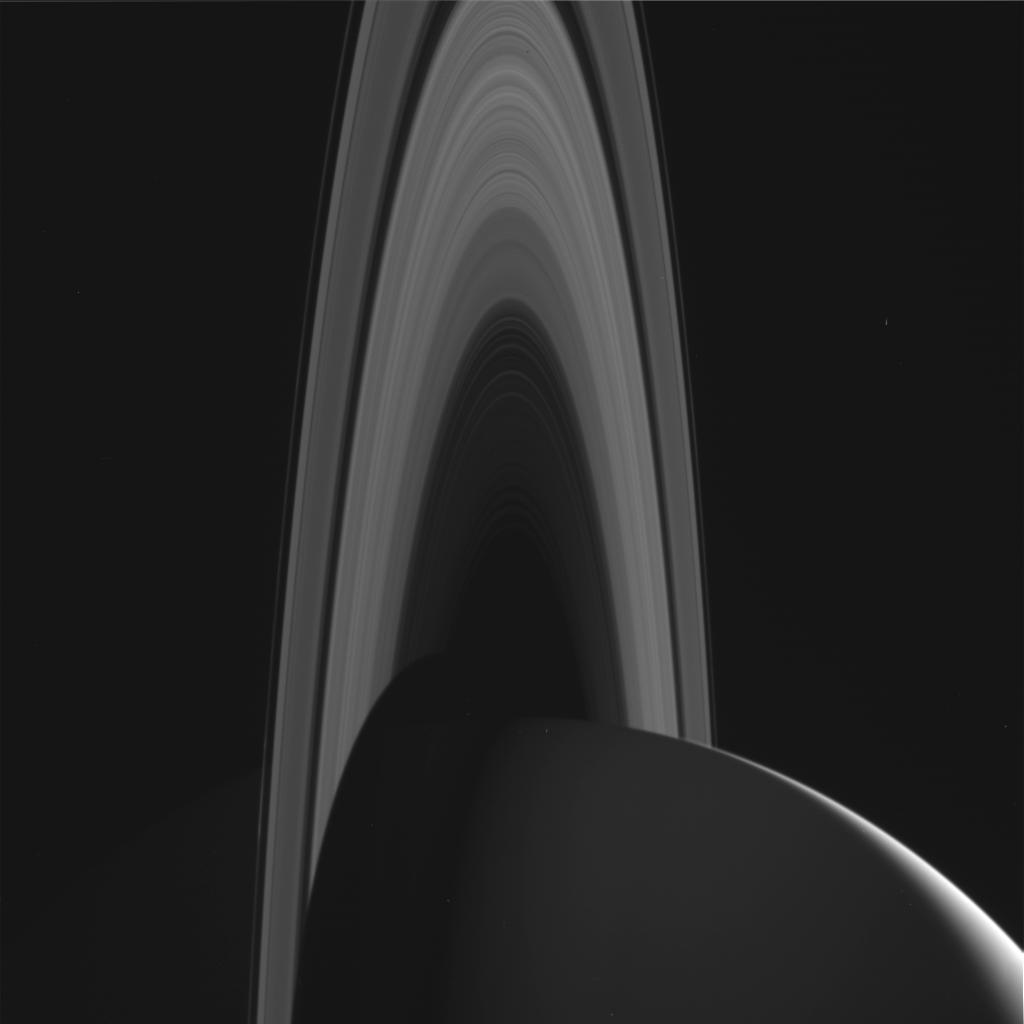Cassini Makes 8th Dive Through Saturn's Rings

The Cassini spacecraft has made its eighth dive between Saturn and its rings, documenting the planetary system up close as it prepares for its Grand Finale plunge into the gas giant on Sept. 15.
After passing through the edge of Saturn's innermost ring on the previous two dives, Cassini had an easier path this time: on June 10 it crossed 2,670 miles (4,300 kilometers) from the inner edge of the D ring through empty space. It didn't need to turn its large antenna dish to use as a shield, so the spacecraft was communicating with Earth throughout the crossing.
During this orbit, Cassini measured the pull of Saturn's gravity to help understand its shape and the rings' mass, according to NASA's Grand Finale orbit guide. The spacecraft, which is a collaboration among NASA, the European Space Agency and the Italian Space Agency, also used its Cosmic Dust Analyzer to investigate ring particles it scooped up on the way.
The spacecraft is also mapping Saturn's southern hemisphere at a high resolution, so scientists can investigate how the winds, cloud structures and atmospheric chemistry change over the planet's seasons. (Cassini captured the image featured here on June 7 as the spacecraft approached Saturn's rings three days before this most recent dive.)
On its next orbit, with a ring crossing June 16, Cassini will try to capture ultraviolet and infrared images of Saturn's entire aurora and study the interactions between Saturn's rings and atmosphere.
Just 14 more orbits before the spacecraft's Grand Finale, when it will dive down into Saturn, taking measurements all the while before losing contact and being crushed. The maneuver will provide one-of-a-kind measurements of the planet's atmosphere and protect Saturn's moons from possible contamination after the spacecraft loses power and maneuvering ability.
Email Sarah Lewin at slewin@space.com or follow her @SarahExplains. Follow us @Spacedotcom, Facebook and Google+. Original article on Space.com.
Get the Space.com Newsletter
Breaking space news, the latest updates on rocket launches, skywatching events and more!
Join our Space Forums to keep talking space on the latest missions, night sky and more! And if you have a news tip, correction or comment, let us know at: community@space.com.

Sarah Lewin started writing for Space.com in June of 2015 as a Staff Writer and became Associate Editor in 2019 . Her work has been featured by Scientific American, IEEE Spectrum, Quanta Magazine, Wired, The Scientist, Science Friday and WGBH's Inside NOVA. Sarah has an MA from NYU's Science, Health and Environmental Reporting Program and an AB in mathematics from Brown University. When not writing, reading or thinking about space, Sarah enjoys musical theatre and mathematical papercraft. She is currently Assistant News Editor at Scientific American. You can follow her on Twitter @SarahExplains.









